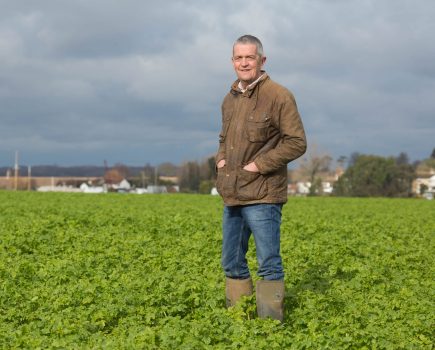By Martin Lines
Is it for adding value to farmers and others in the supply chain? Or is it for standing out in the crowd and demonstrating different forms of production?
I’ve always been a firm believer in recognising the difference in production. Whether it’s higher standards or levels of intensification, the consumer needs a way to identify how their food is farmed and matched with the appropriate price. I also think as food producers, we should be able to demonstrate the safety standards of our produce by meeting legal requirements wherever necessary. How we show this is always up for discussion; is it a government-inspected body similar to those who visit food retailers or a self-funded inspection to gain a logo or certificate at the farmer’s expense?
Over the years, various labelling initiatives and claims by manufacturers and retailers have set out to distinguish between the multiple methods of production. With over half the food produced consumed out of the home in the UK, most of it is unrecognisable and traceable products. What value is a logo when the consumer does not see it? Many retailers choose not to use a standard recognised label because they see little value in it. What value is it then for farmers to get the same certification?
Certification has been dominated by one label for many years, supported by farming bodies and the wider industry, giving little opportunity for competition. We’ve seen over the years that a particular farm assurance scheme has continued to add various aspects to a single standard, with many of its producers gaining little benefit.
The requirements for what farmers produce now and in the future are changing. We will increasingly be asked alongside food production to deliver a range of outputs from the land we manage. With a legally recognised climate and nature crisis, regulation is making all businesses understand their carbon footprint and their farm’s impacts on biodiversity.
I often feel many of our farming industry leaders are not being truthful in the transition already happening in our sector. There is an element of denial around the scale of change needed to reach our legally binding climate and nature targets, leaving many farmers in the dark with little understanding of navigating this monumental transition to more sustainable food production. As farmers, we know how to react to market pressures and incentives from supply chains or governments. But the push to record and demonstrate our climate and biodiversity footprint remains slow.
I have heard rumours about a Green Tractor farm assurance logo for the last two years. Not being involved in it, I was interested to see what it would mean and what additional benefits it might give farmers and consumers. Like many, I was somewhat surprised when it was recently announced. Many of the basic things it adds to this supposed flag-bearer of high environmental standards bring little to no value as a standalone scheme. It appears heavily tied to the England ELM scheme and has taken little into account of the delivery timeframe and future schemes in devolved nations.
Regardless of the wider industry’s hesitance to accept it, farmers delivering for climate and environmental improvements will be mainstream. So, the standards in Green Tractor, such as proving you have done a farm carbon audit or demonstrating you understand the natural capital and biodiversity on your farm, will just be standard business. What’s the value of paying to get certified for something everybody is already doing?
The data collected would be valuable to others in the supply chain who want to mitigate the impacts of their own businesses, and giving this data away at the farmer’s expense is really unacceptable. We’re already seeing a number of companies willing to pay an additional premium or hectarage price to understand or offset their carbon and biodiversity impacts. For instance, ADM is offering up to £48 a hectare to producers growing oilseed rape in return for the delivery of seven key actions so that you can demonstrate you are doing practices that reduce artificial fertiliser, protect biodiversity and improve soil health. Plus, there’s a payment for your time filling out the paperwork.
Many other agreements from companies offer similar incentives, with many more following suit. These offers are on top of the payments you can receive from SFI23 for doing similar actions. I question why I, as a farmer, should be paying another organisation to demonstrate the steps I’m taking to improve how my business impacts climate and nature. If somebody else wants to benefit from an action I’m doing on our farm and for our business, then that value must also be returned to the farmer. If we’re not careful with how assurance schemes take shape, they’ll benefit only larger farming businesses that can spread the costs. How do we ensure all farm sizes can survive in the future with a fair balance of risk for everybody?
Having recently attended a conference in France with organisations and farmers in attendance from across Europe, many were envious of how developed our public-funded schemes and private markets seem to be compared with their own. We have a clear market advantage to capture the value of how we farm. This new standard of more sustainable and environmentally-focused farming, and the higher expectations of farmers that come with it, will become the new baseline of production.
This article was taken from the latest issue of CPM. For more articles like this, subscribe here.
Sign up for Crop Production Magazine’s FREE e-newsletter here.




